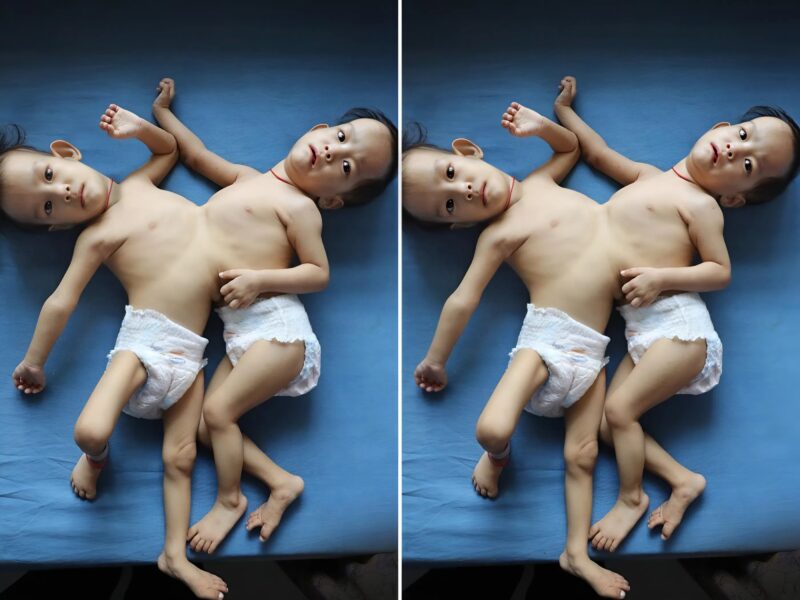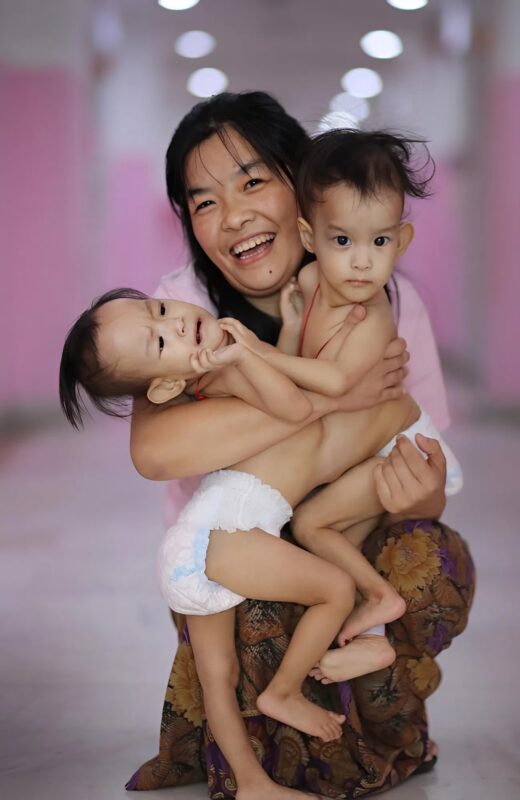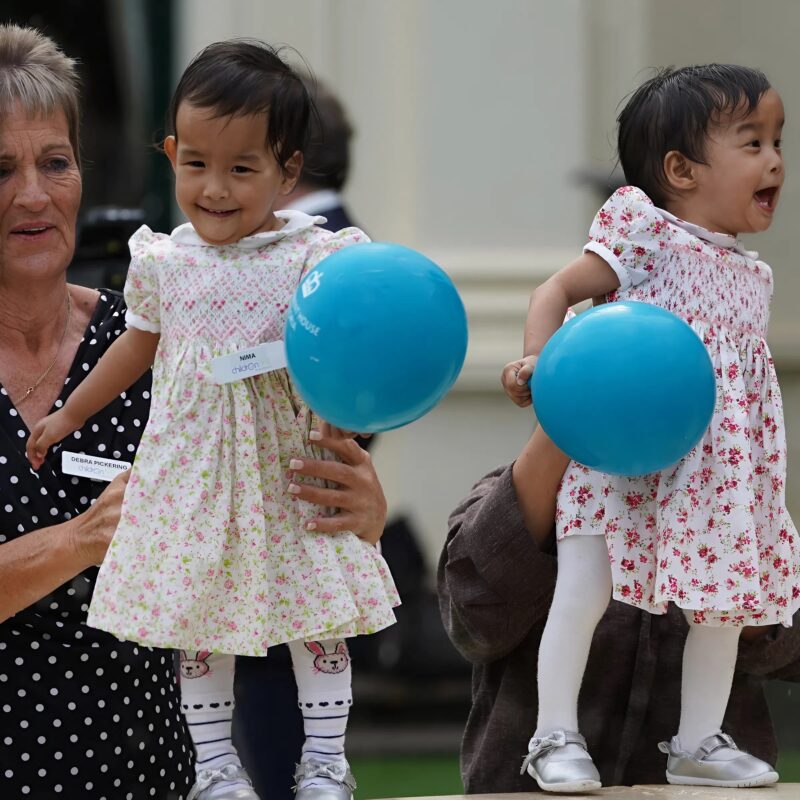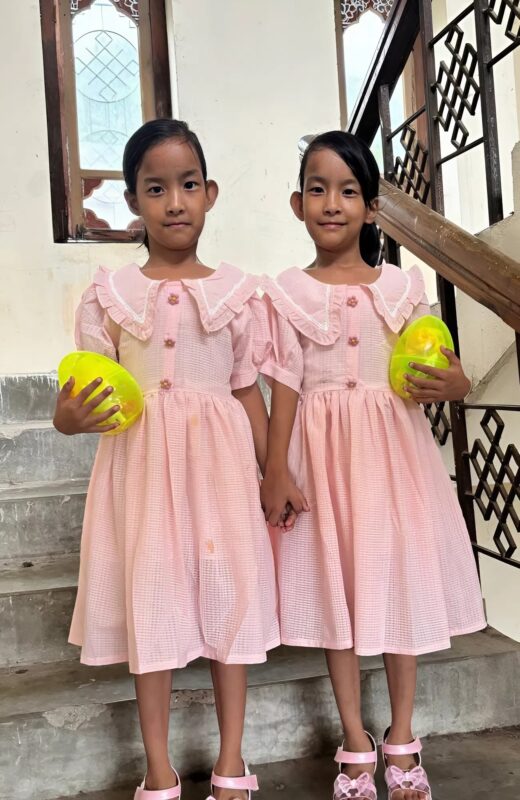

When Nima and Dawa were born in the Himalayan nation of Bhutan, their arrival brought both joy and worry. They were conjoined twins, joined at the chest and abdomen, their tiny bodies bound together in a way that made their survival uncertain. Conjoined twins are extremely rare, and in many cases separation is not possible—especially when they share vital organs. For their parents, the news was heartbreaking. Yet from the beginning, Nima and Dawa showed a will to live.
At only 14 months old, their journey led them far from their mountain home to the bustling city of Melbourne, Australia. In 2018, the Royal Children’s Hospital welcomed them with open arms. Surgeons, nurses, and specialists prepared for months, studying scans and planning every step of what would be a life-saving operation. The risks were enormous. Would the girls survive the anesthesia? Would separating them damage their internal organs? The medical team knew that everything had to go perfectly.
On the day of the surgery, the hospital was filled with hope and tension. A team of 18 skilled surgeons, nurses, and anesthesiologists gathered in the operating room. For six hours, they worked with precision and care. They carefully separated tissue, untangled blood vessels, and ensured that each child had what she needed to live on her own. Finally, the moment came when Nima and Dawa were no longer physically connected. Against all odds, the surgery was a success. The doctors and nurses who had fought so hard for these girls couldn’t hold back their emotions. Tears of relief and joy filled the room.
Back in Bhutan, their mother, Bhumchu Zangmo, waited anxiously for news. When she learned that her daughters had been successfully separated, her heart overflowed with gratitude. She later shared how thankful she was—not only for the doctors and the hospital staff but also for the strangers around the world who supported the operation. “They gave my daughters a chance at life,” she said, her voice filled with emotion.
The recovery process was long but steady. At first, Nima and Dawa had to learn how to sit up, crawl, and walk as individuals. They had spent their entire lives attached, and suddenly they had to adjust to freedom. Physical therapy became a part of their daily routine. Slowly but surely, the girls gained strength. With every new milestone—standing on their own, taking their first steps independently—their family and doctors celebrated. Each small achievement felt like a victory.

Now, seven years later, the twins are unrecognizable compared to the frail babies who once lay in a hospital bed. They are second-graders in Bhutan, attending school, making friends, and discovering their own unique personalities. Their mother proudly says, “They are already very independent and are growing very well.” Independence is something the family never took for granted, and it shows in the way the girls approach life.
Nima is described as curious and a little more outgoing, while Dawa tends to be thoughtful and observant. Together, they balance each other perfectly, like two sides of the same coin. They play games, laugh loudly, and explore their surroundings just like any other children. Yet those who know their story see more than just playfulness—they see resilience, strength, and the triumph of love over fear.
This year, the girls decided to celebrate their birthday in a special way. Instead of the usual small party with friends and cake, they visited a nearby temple. There, they spent time giving food to elderly people in need. For children so young, this choice showed a deep sense of compassion. Their mother explained that even the little pleasures in life carry great meaning for them. To Nima and Dawa, kindness is just as important as fun.

Their story has touched countless people around the world. What began as a frightening diagnosis has become a tale of hope. Families facing challenges of their own often look to Nima and Dawa as inspiration. They are living proof that even when the odds seem impossible, miracles can still unfold. The dedication of the medical team in Melbourne, the love of their family, and the determination of the girls themselves combined to create a future that once seemed unreachable.
As they grow, Nima and Dawa continue to remind us of what really matters. Life’s simplest joys—school lessons, laughter with friends, sharing food, or celebrating another birthday—are treasures. Their journey is not just about medical science or surgery; it’s about human spirit, resilience, and the bonds that remain unbroken even after separation. Though their bodies were divided, their hearts are forever united.

Looking at them now, you would never guess the incredible struggle they endured in their first year of life. Bright smiles light up their faces. Their laughter fills their home. They are two little girls who beat the odds, and their story will continue to inspire for years to come.
From a small village in Bhutan to an operating room in Melbourne, from uncertainty to joy, Nima and Dawa’s journey is one of the most extraordinary survival stories of our time. And as they step forward into the future, side by side but free to be themselves, the world watches with admiration and hope.
